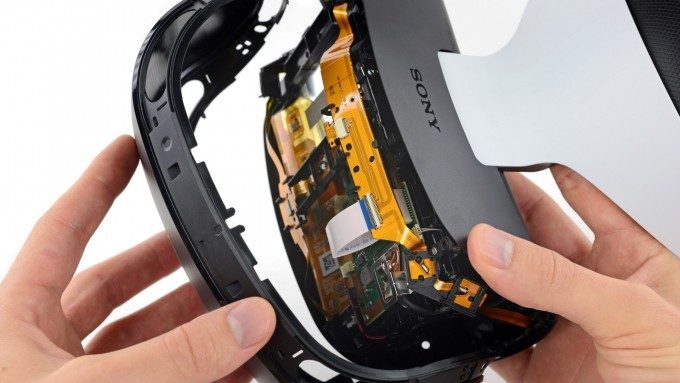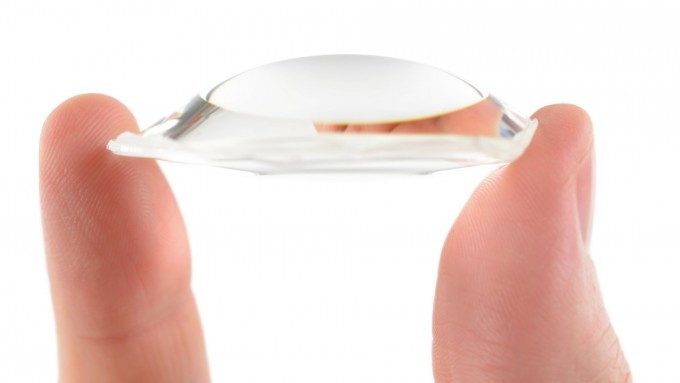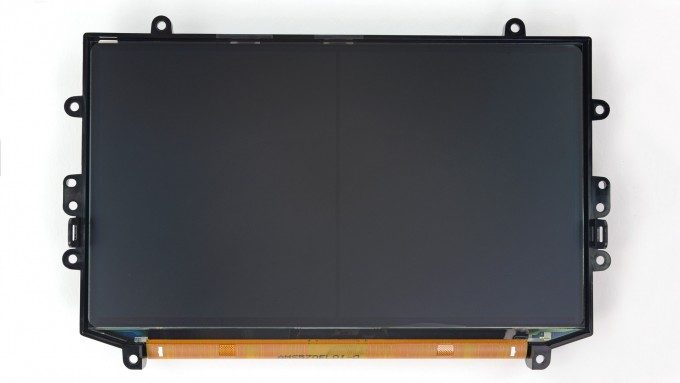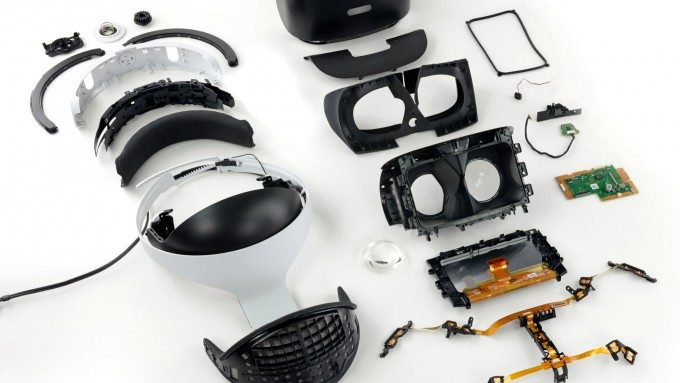A hardware launch wouldn’t be complete without an iFixit teardown, and the most recent VR device on their operating table is Sony’s PlayStation VR.
With decades of experience in hardware design and manufacturing, and having created many non-VR head-mounted displays in the past, it’s no surprise that Sony’s VR headset is competitive with the other high-end VR headsets on the market, and arguably surpasses the high-end PC headsets in some areas of ergonomics and image quality. Perhaps more surprising is the relative ease of disassembly; Sony have a fondness for proprietary hardware and unusual design solutions, but the iFixit team had little trouble pulling it apart, giving it an 8/10 for ‘repairability’, a point above the Rift, and matching the Vive, and just a step behind the modder-friendly OSVR HDK 2.

Sony beat iFixit to the punch, having released a video last month of mechanical design director Takamasa Araki disassembling the whole unit with impressive ease. But Araki stopped short of removing the lenses from their housing as they are glued on; iFixit popped them out with the help of a heat gun, and indeed they appear to be a conventional dome shape rather than the low-profile Fresnel lenses found in the Vive and Rift, contributing to the extra weight of the PSVR headset, but explaining why it avoids the unsightly ‘godray’ refractions that are notable on the HTC and Oculus headsets.

We also get to see the OLED display up close for the first time, and interestingly, the single 1080p display panel has a hexagonal pattern on the surface. There is some confusion here, as Sony have talked about subpixels and custom displays on multiple occasions. iFixit says the display is Samsung-made, and the part number seems to agree. Samsung’s OLED displays typically use PenTile or ‘diamond’ subpixel arrangements in many of their smartphone panels, which is where things get interesting.

iFixit suggests we’re looking at a unique hexagonal subpixel layout, but with Sony’s prior statements about using a RGB display (as opposed to the PenTile RGBG approach), we’re not so sure. One hypothesis is that we’re looking at a diffusing mesh of sorts, above a conventional RGB stripe layout, which could be a factor in why PSVR has perhaps the least noticeable ‘screendoor effect’ of all the headsets. We’ve reached out to iFixit for their thoughts.

In addition, iFixit deconstructed the Processing Unit, a small breakout box that helps the PSVR communicate with the PS4, manage spatial audio and the ‘social screen’ output to the TV. Although it doesn’t improve the PS4’s VR rendering performance, the device is clearly powerful, requiring a cooling fan and chunky heatsink over the Marvell SoC, capable of processing 4K video, which incorporates an ARM-based quad core CPU.

We’ve remarked on the comfort and image quality of Sony’s design several times, and this teardown further demonstrates Sony’s attention to detail on build quality throughout the hardware. We hope to see the wipe-down surfaces and halo-style fit on other headset designs in the future.






